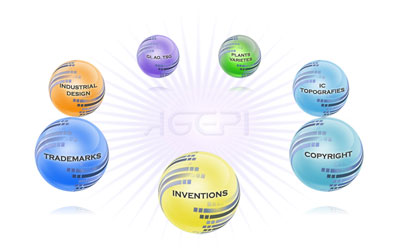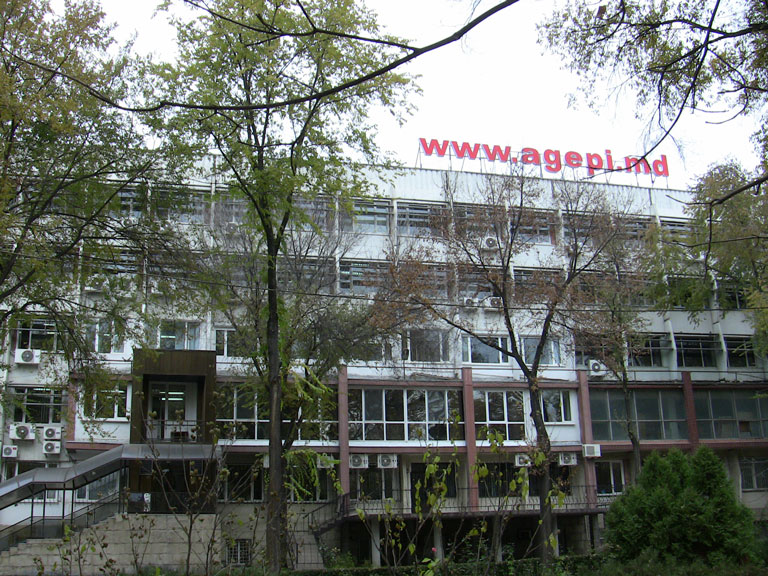
Delivering online IP services in Moldova
By Ms. Lilia Bolocan, Director General and Mr. Vitale Rusanovschi, Specialist Coordinator of the IT and e-Transformation Division, State Agency on Intellectual Property of the Republic of Moldova (AGEPI)
The availability of increasingly powerful digital tools continues to transform business operations. Moldova’s State Agency on Intellectual Property (AGEPI) is no exception. In line with Moldova’s “Digital Moldova 2020” strategy, adopted in 2013, AGEPI is making significant progress in digitizing its operations and ensuring users benefit from more user-friendly and efficient services.
A national strategy for the information age

Intellectual Property (AGEPI) is raising its service provision to a
whole new level. (photo: Tatiana Nasirov, AGEPI)
Development of Moldova’s information society is now well underway. In terms of internet access speed, the country ranks among the world’s top 20. Every second citizen is an internet user, and over 50 percent of households benefit from broadband internet access. The contribution of information and communication technologies (ICTs) to economic growth is between 8 to 10 percent.
In 2010, the government established an e-Government Center to promote and support the modernization and e-transformation of public institutions for a more efficient, transparent and connected government. In this context, and following the lead of WIPO, AGEPI is implementing new IT-based systems to facilitate the registration and management of intellectual property (IP) rights.
At the beginning of 2014, we launched our new electronic service for filing IP applications on line. Our so-called e-AGEPI service provides applicants, rights holders, their representatives and other interested parties, with access to a modern, efficient and cost-effective means of filing their patent, trademark and design applications. With a user-friendly web interface, e-AGEPI supports a range of key tasks associated with filing an application, from drafting and verification through to electronic filing and payment of fees.
AGEPI’s new user-friendly online service
At the heart of AGEPI’s new software is a secure user interface, the Personal Desktop, which applicants can access by creating an account via the AGEPI website.
The system is designed to provide a high level of information security and to minimize the time it takes to file an application and related documents.
To register their intellectual property, an applicant starts by completing the standard form for the relevant category of IP. The form is populated automatically with their personal data, which is saved within the system when they create their account. They are then prompted to enter all the other required information, and the system verifies that all fields have been completed with valid entries before the application is submitted. Guidelines are available in three languages – Romanian, Russian and English.
Once all data has been entered correctly, the application is signed with an e-AGEPI digital, mobile or electronic signature and submitted to AGEPI, where it is automatically logged and attributed a number. At this point the applicant is sent a notification via his or her Personal Desktop and e-mail confirming receipt of the application, its number and the date of filing. All subsequent communications relating to the application are also sent via the Personal Desktop and copied to their email.

The system is also connected to Moldova’s governmental service for electronic payments, Mpay, meaning applicants can pay securely online by credit card, internet banking or even in cash via a payment terminal or bank counter.
Benefits for applicants – and AGEPI
The new system offers many advantages to our service users. It provides them with a secure system for filing their applications; a rapid channel for communication with us; round-the-clock access to up-to-date information about the status of their IP registrations; prompt notification of any developments; and the ability to pay all their fees online at no extra charge.
Applicants are already embracing these advantages. 17.5 percent of the 3,491 trademark applications filed between January 1, 2014, and May 31, 2015, were submitted online, along with around 400 related documents.
This digital transformation also offers AGEPI many benefits. With information stored electronically, we can automate and optimize our processes and thereby improve service delivery. Procedural terms can be tracked by the system, and alerts triggered as deadlines approach; correspondence and documents can be managed efficiently; and user accounts and payments can be monitored and controlled.
To realize these benefits, in 2015 we began a new project to digitize our information flow. Hard-copy documents are being scanned and uploaded to create a fully searchable electronic archive. With this in place, it will also be possible to improve the management of procedures for examination of the applications filed. Our aim is to create a completely paperless internal operation.
Securing the digital future
In all of this, security is paramount. IP registration and management involves a lot of sensitive information, and AGEPI has invested heavily to ensure that it is only accessible to those who are entitled to see it. Our state-of-the-art unified threat management solution includes a next-generation firewall and intrusion prevention system to protect against viruses, spam and other external threats.
We also carry out incremental data backups on a daily basis, plus a full back-up every month. Quarterly back-ups to magnetic tape using the linear tape-open (LTO) format ensure that there is a durable copy of recent data.
For AGEPI, the information age means changing our economic, financial and managerial processes, not just our technology. But by making ICT a priority, we are raising our service provision to a whole new level.
The WIPO Magazine is intended to help broaden public understanding of intellectual property and of WIPO’s work, and is not an official document of WIPO. The designations employed and the presentation of material throughout this publication do not imply the expression of any opinion whatsoever on the part of WIPO concerning the legal status of any country, territory or area or of its authorities, or concerning the delimitation of its frontiers or boundaries. This publication is not intended to reflect the views of the Member States or the WIPO Secretariat. The mention of specific companies or products of manufacturers does not imply that they are endorsed or recommended by WIPO in preference to others of a similar nature that are not mentioned.